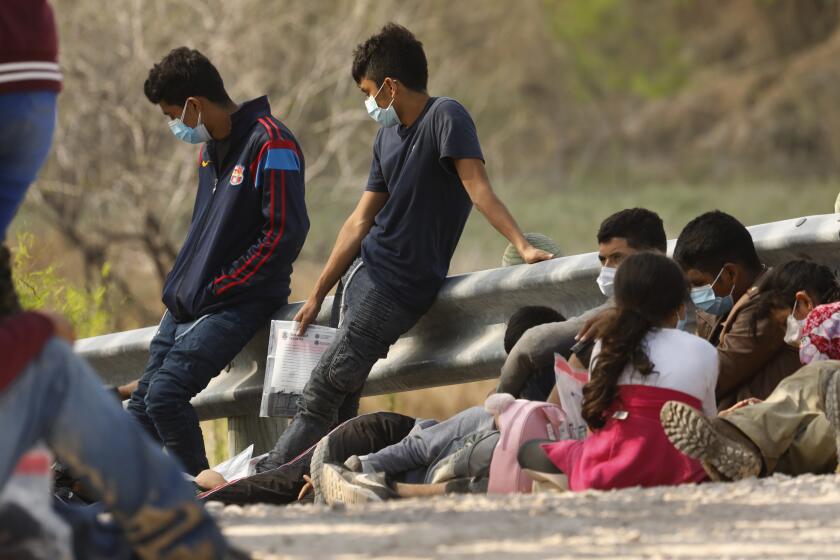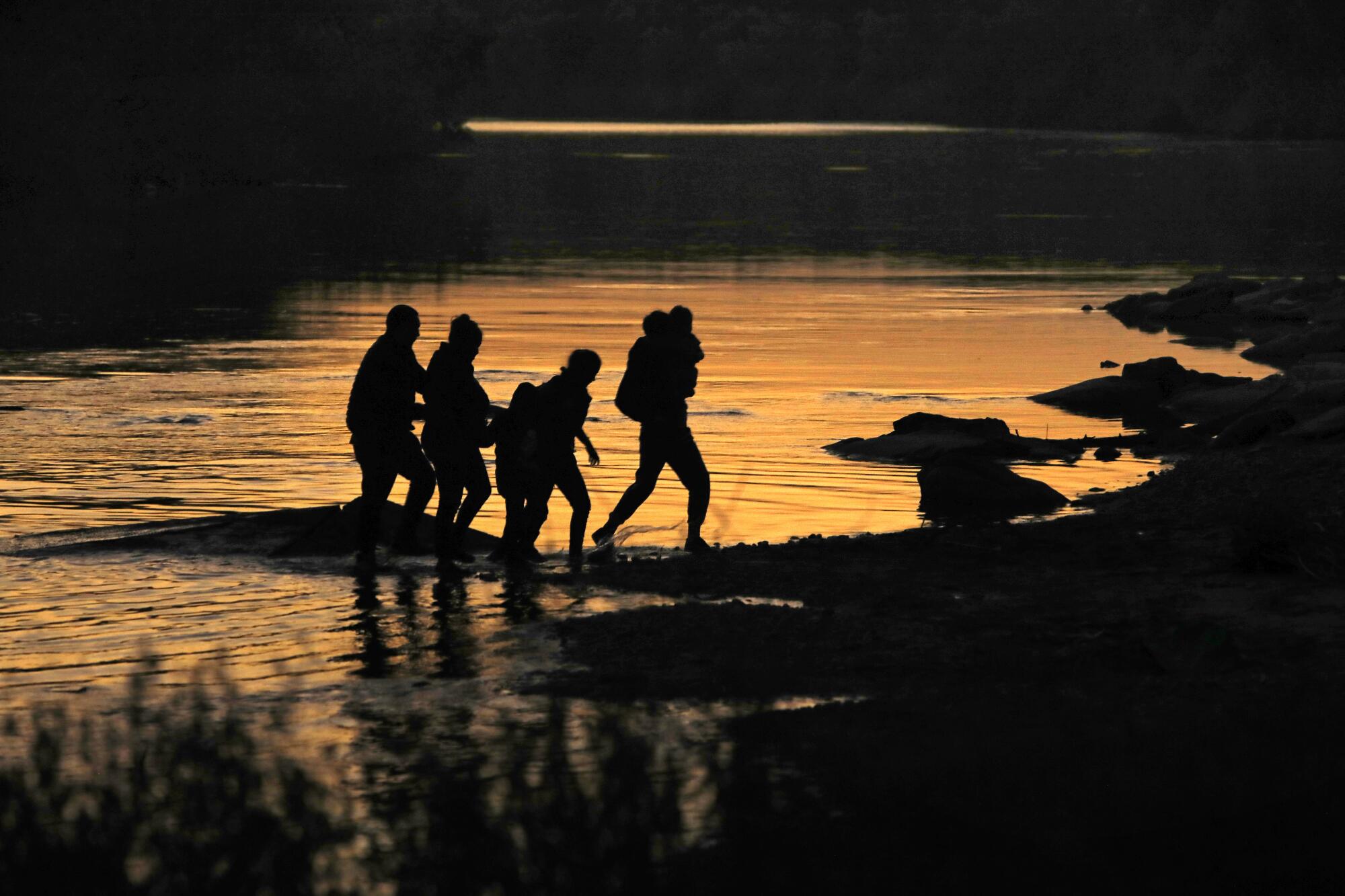
- Share via
MISSION, Texas — As dusk closed in on the Texas border with Mexico, Melania Rivera and her 3-year-old twin boys climbed up the banks of the Rio Grande, at last setting foot in the United States.
Her former partner and their two older children had been in the U.S. since 2019, waiting for their asylum cases to be heard. Rivera, whose home in Honduras was destroyed by a hurricane in November, set out to join them after a relative in Virginia urged her to come quickly, saying border restrictions had relaxed under President Biden.
“He told me there was an opportunity,” said Rivera, 42, who was intercepted south of the city of Mission with seven other migrants by local police working with the Border Patrol.
The belief that the end of the Trump administration has opened the border has spread throughout the region alongside another rumor: Young children are the ticket in.
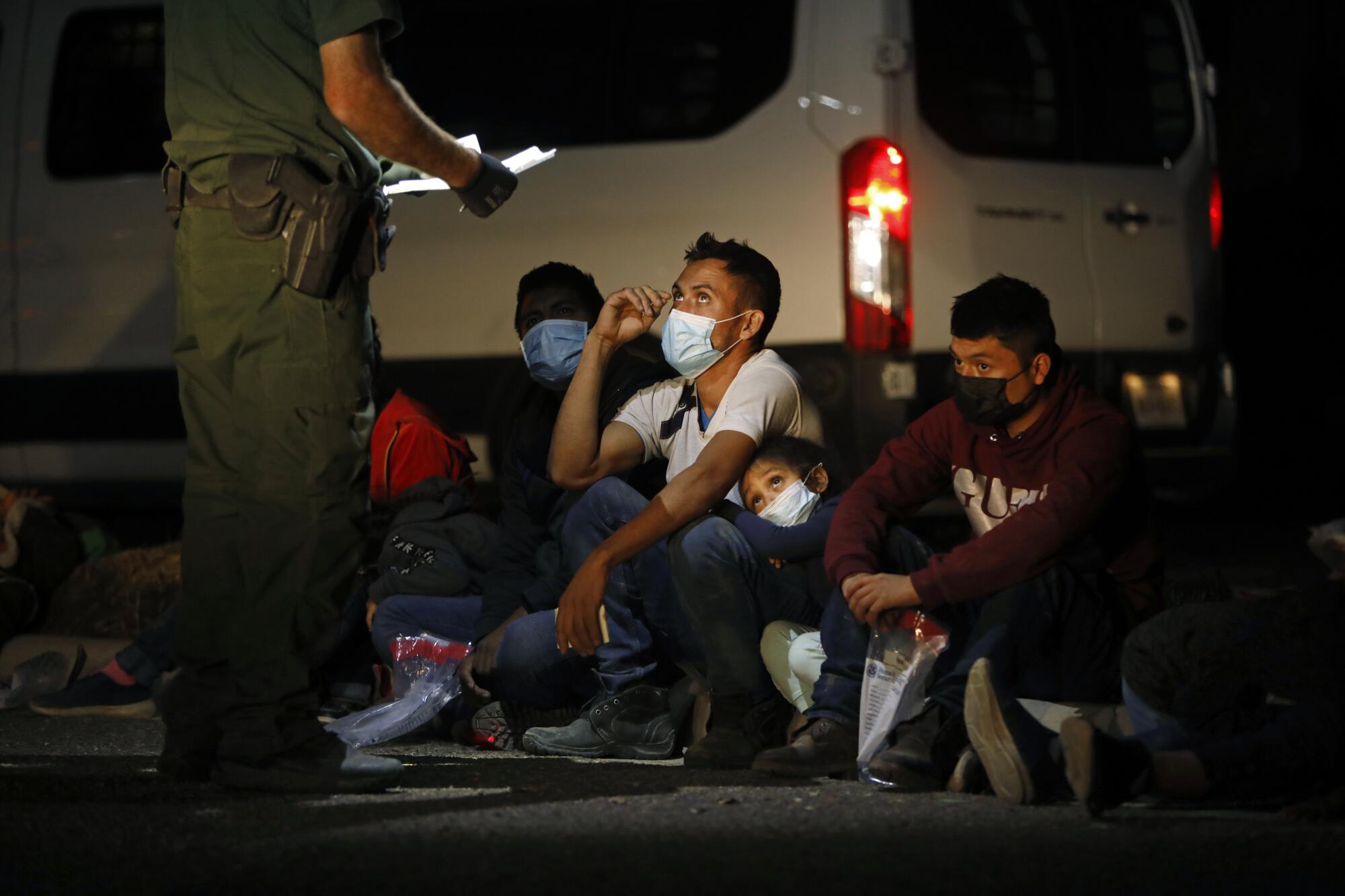
Human smugglers began pushing those ideas soon after Biden won the election in November, accelerating an exodus from Central America that was already underway after devastating back-to-back hurricanes and economic decline caused by the COVID-19 pandemic. The message that now was a propitious time to head north was amplified on social media, television and radio in Central America.
Border crossings recorded by U.S. authorities climbed steadily through the summer and fall as countries lifted coronavirus lockdowns, then rose sharply this year, jumping from 78,442 in January to 100,441 in February — nearly triple the total for February 2020.
The increase is evident in the streams of families trudging north through the jungles of southern Mexico, in the crowded shelters of northern Mexican border cities and in southern Texas, where in recent days a constant flow of people has crossed the swiftly moving Rio Grande on rafts and turned themselves in to federal authorities.
Homeland Security Secretary Alejandro N. Mayorkas said last week that U.S. agents are on pace to intercept more migrants on the southwest border in 2021 than they have in the last 20 years.
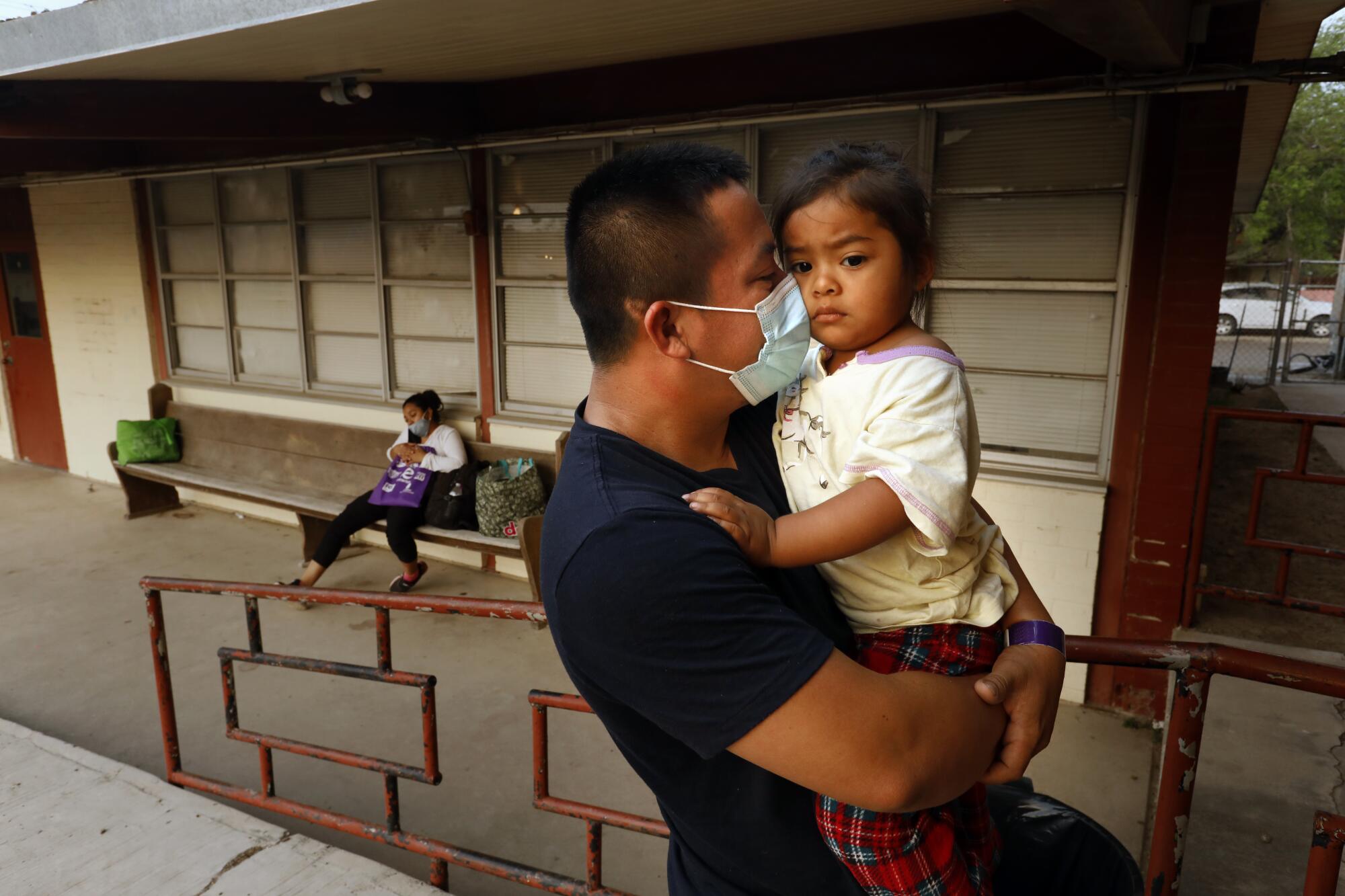
Rodriguez said he traveled with his daughter because smugglers offered him a discount and told him it would help his chances of being allowed to stay.
While the majority are single adults, as has traditionally been the case, there has been a dramatic spike in the number of children making the trip.
Last month, 9,457 people under 18 arrived at the border without adults, up from 3,490 in February of last year and, according to the Washington Office on Latin America think tank, the fourth-highest monthly total in a decade.
More children are also coming with relatives. The number of migrants arriving in “family units” — which by government definition include at least one child — was 19,246 last month, up from 7,117 a year earlier.
“A lot of them think that now that Trump is gone, if they arrive with children it will be easy to cross into the United States,” said Gabriel Romero, a Franciscan priest who runs a shelter in southern Mexico that assisted about 6,000 migrants during January and February — compared with 4,000 all of last year.
“Easy” is an exaggeration, but there is some truth to the rumors.
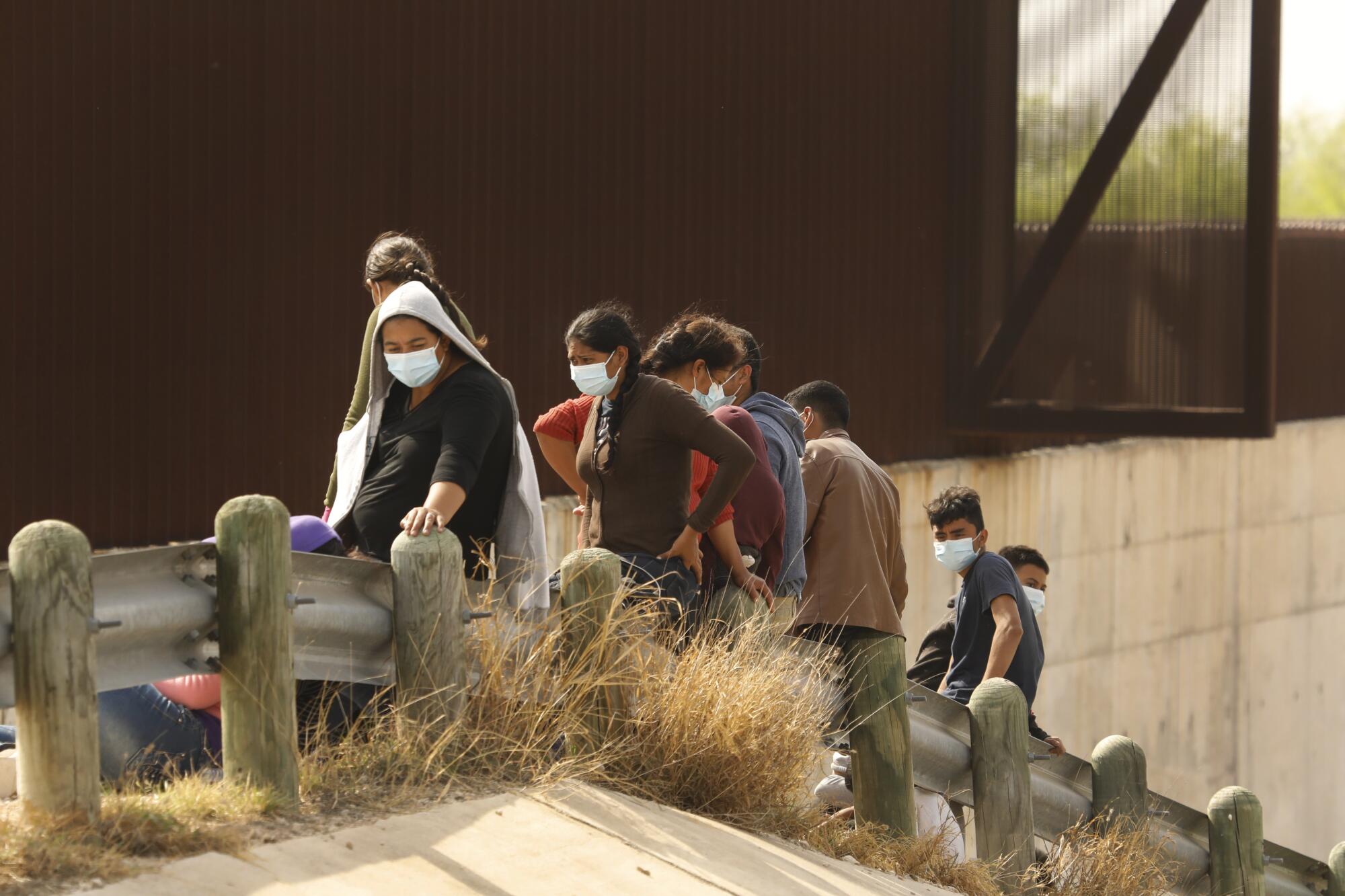
Strict immigration policies were a Trump hallmark, such as a program known as “Remain in Mexico” that forced 70,000 asylum seekers to wait in Tijuana, Ciudad Juarez and other Mexican border cities while their cases wound through U.S. courts.
Then there was the obscure public health statute known as Title 42 that the Trump administration invoked last year in response to the coronavirus crisis. It directed border authorities to rapidly expel hundreds of thousands of people with no due process or opportunity to pursue asylum.
Biden has maintained some of those Trump restrictions, while loosening others.
The Biden administration says migrants can still get protection under a Trump-era pandemic policy. But in a year, fewer than 1% have been able to do so.
Most notable has been Biden’s refusal to expel migrant children who arrive at the border without adults.
That means that young people like Michelle Rubio, a 17-year-old from Honduras who crossed the Rio Grande without a guardian on a recent balmy evening and was picked up by Hidalgo County constables, can expect to eventually be placed into the care of her father, who lives in Virginia.
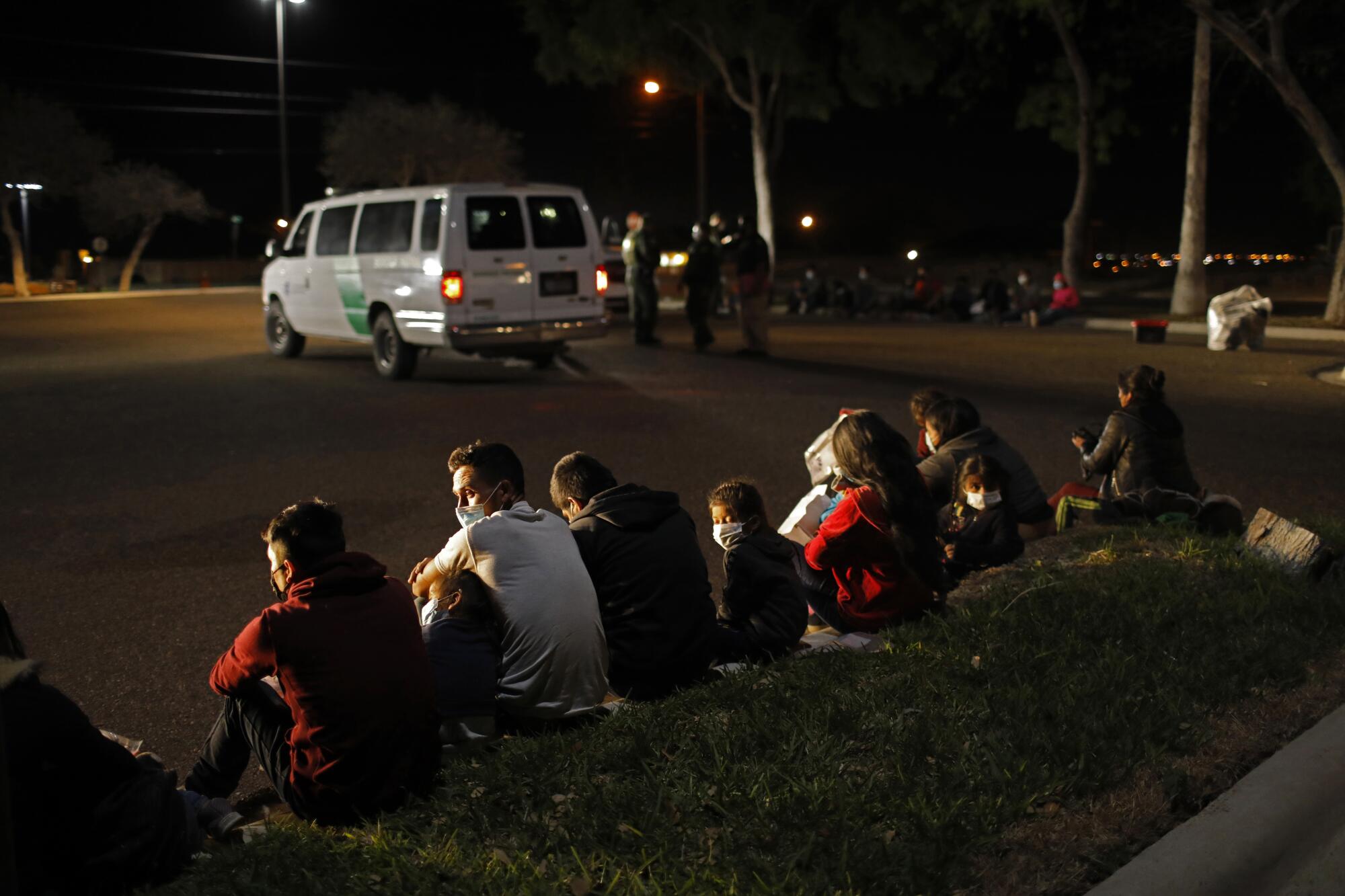
“There’s a lot of violence in my country,” Michelle said after following a handwritten sign posted by border agents near the river that said “asylum” until she encountered a convoy of local constables. “I can’t live there.”
As Michelle waited to be handed over to federal agents, she nervously fingered the wooden cross hanging from her neck.
Since late January, the constables have been discovering about a hundred migrants each night along the Rio Grande, said Sgt. Roger Rich. Many of them are solo children. Last month they found a 4-year-old Honduran boy on the riverbank who raised his shirt to show them a relative’s phone number, written on his chest.
This is not the first time large numbers of young migrants have appeared at the border.
One big rush occurred in 2014, amid a wave of worsening gang violence in Honduras and El Salvador. There was another influx in 2019, after Trump was pressured to end a policy under which he separated migrant children from their parents.
In recent weeks, officials have scrambled to keep pace with the latest increase, reopening a shelter in central Texas and sending children to stay at new shelters in a former camp for oil workers in west Texas and at the Dallas convention center.
More than 5,000 unaccompanied children are in U.S. border agencies’ custody, and more than 9,500 are being held by Health and Human Services.
A total of 3,889 children were being housed at a facility in Donna, Texas, that under pandemic protocols is designated to hold 250, according to Border Patrol data obtained by The Times. More than 600 of the children in Border Patrol custody have been held for at least 10 days, well past the 72 hours allowed under federal law.
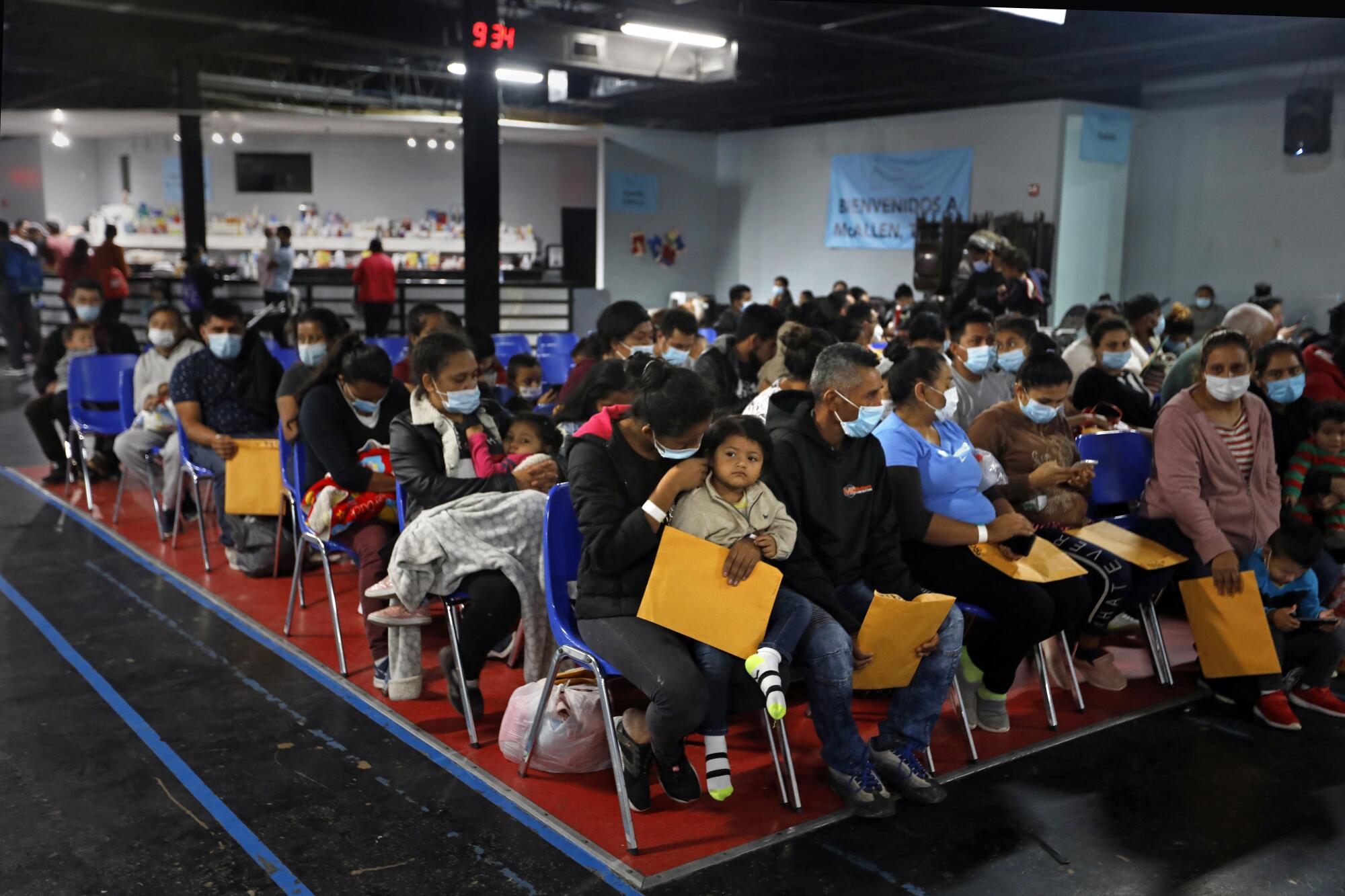
“The system is just really overwhelmed right now,” said Leecia Welch, an attorney at the Oakland-based National Center for Youth Law who recently interviewed 20 unaccompanied minors held on the border.
One child hadn’t showered in six days, she said. Many said they were only allowed outside every few days, for 20 minutes.
The fact that unaccompanied minors are being allowed into the U.S. for the first time in months has helped fuel rumors that the border is open to children.
So, too, has an apparent policy change in the Mexican state of Tamaulipas, which for reasons that have not been made clear recently stopped accepting deported families with children under 7.
Biden administration officials had been using the Trump administration’s health statute to expel families. But they say the change in Tamaulipas has given them little choice but to allow some families with children into the U.S.
“The president helped us,” said Luis Enrique Rodriguez Villeda, a 31-year-old from Guatemala who crossed from Tamaulipas into Texas on a plastic raft last week with his 2-year-old daughter, Ariana. “I’ve seen how he opened the border and gave people permission to come for a better life.”
Rodriguez said he had traveled with his daughter because smugglers offered him a discount and told him it would help his chances of being allowed to stay.
“I didn’t want to risk being sent back,” he said.
After holding Rodriguez and his daughter for two days, Border Patrol agents slapped an ankle monitor on his right leg and told him to report to immigration court on May 26 in Detroit, where he has relatives.
Not all migrants are so lucky. While many of the families who crossed from Tamaulipas have been allowed to stay in the U.S., the rest have been flown to other border cities and quickly expelled to Mexican states that are accepting families with young children.
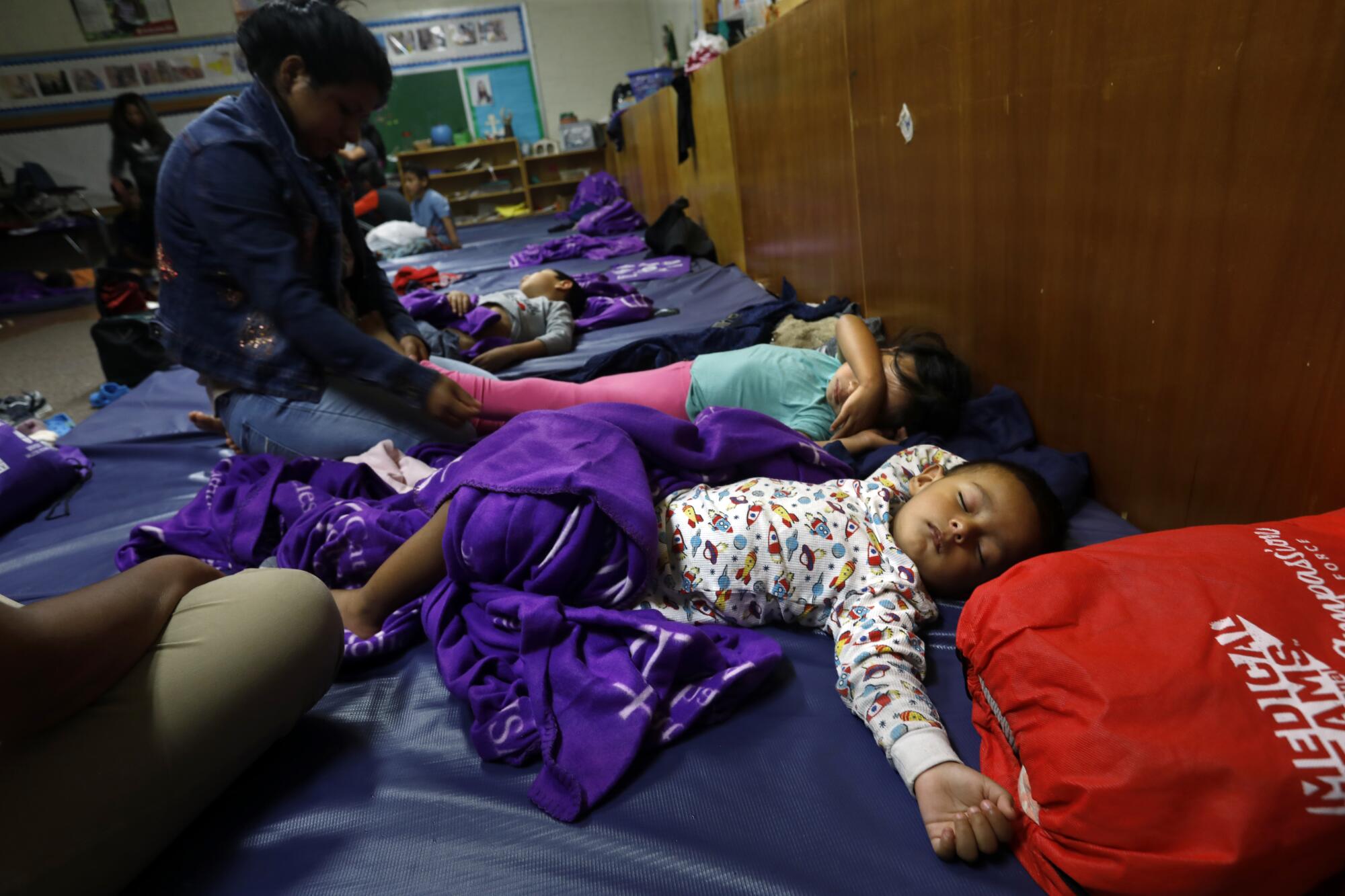
Many have ended up in Juarez. On the east side of the dusty industrial city, just south of the rusted steel wall that marks the boundary with El Paso, families drifted about a crowded migrant shelter on a recent blustery morning. Many seemed bewildered.
Back home, in Guatemala, El Salvador and Honduras, they had gone into debt to pay up to $10,000 to smugglers who had lured them north with tempting promises: Biden had opened the border.
“They said that with children you could pass freely,” said a 38-year-old named Yoli, who declined to give her last name because she worried that the smugglers might come after her.
Leaving behind her taxi driver husband and their two older children, she left Guatemala City with her 5-year-old son in early March and eventually the pair crossed from Tamaulipas into Texas. When they were put on a plane with dozens of other migrant families, she assumed they would be released soon after landing. Instead, agents marched them onto the border bridge in El Paso and told them to walk toward Juarez.
“We all started to cry because it wasn’t what the smugglers had promised,” she said.
She said she feels guilty for bringing her son on such an arduous journey. He was sniffling from a cold he got after arriving in Juarez, where temperatures dip into the 40s at night.
It seemed everybody at the Bread of Life shelter had a similar story.
A woman named Flora and her 14-year-old son had endured a long journey that included a scorching 16-hour ride in a tractor-trailer packed with 200 other migrants. They were deported from the U.S. only a few hours after they arrived.
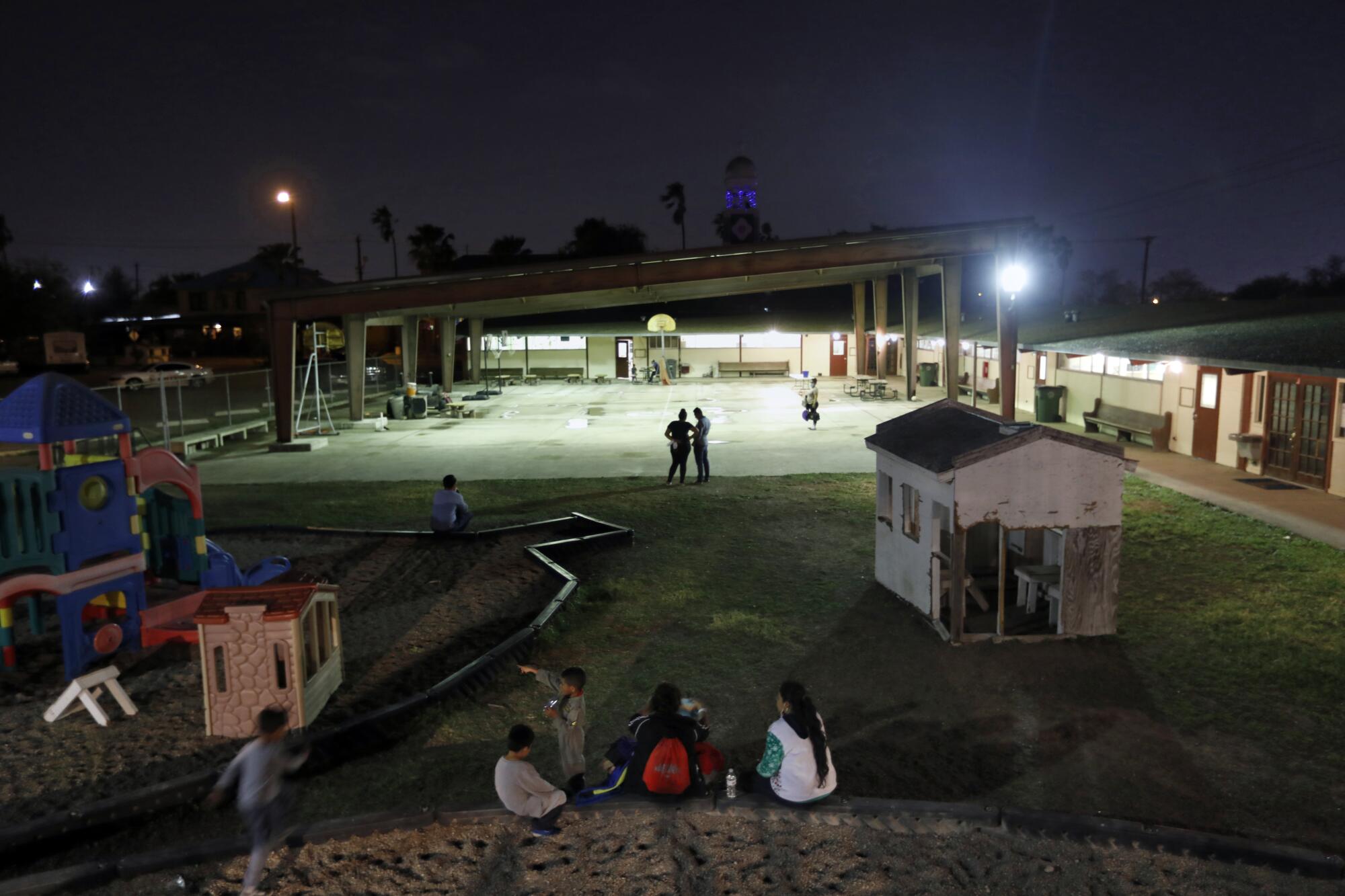
That night, they slept on the streets of downtown Juarez. Thieves took their backpacks. “Now we just want to go home,” she said.
The rising number of families being returned from the U.S. is alarming authorities in Mexico.
“We’ve been trying to address a problem that we didn’t provoke,” said Enrique Valenzuela, who helps coordinate migrant assistance for the state of Chihuahua. “This is a group of people leaving their country for reasons we can’t control and who are arriving here for reasons we can’t control.”
Valenzuela, whose office overlooks the border bridge where deportees are returned, tries to personally greet them all, inviting the migrants to his offices for sandwiches and Wi-Fi so they can inform family members that they didn’t make it across.
He’s concerned about the uptick in migration — and in particular about the possibility of COVID-19 outbreaks in cramped migrant shelters. He notes that the number of migrants applying for asylum in Mexico is also on the rise, with 6,992 applications filed last month, higher than any February in recent history.
The Biden administration has been pressuring Mexico to do more to stop migrants, and last week Mexico announced that it would be sending hundreds of immigration agents and national guard troops to its southern border.
Biden’s efforts to dissuade migrants from making the trip have been less successful.
“Don’t come,” Biden said in a recent interview with ABC News, explaining that more U.S. aid to Central America was on the way. But that messaging, which has been broadcast on social media and the radio in Guatemala, El Salvador and Honduras, doesn’t seem to be getting through.
On Friday, amid periodic tropical downpours, a steady stream of people cut through the forests and pastureland on the outskirts of Palenque, Mexico, about 100 miles north of the Guatemala border. Many of the migrants were single men, but there were many families, too.
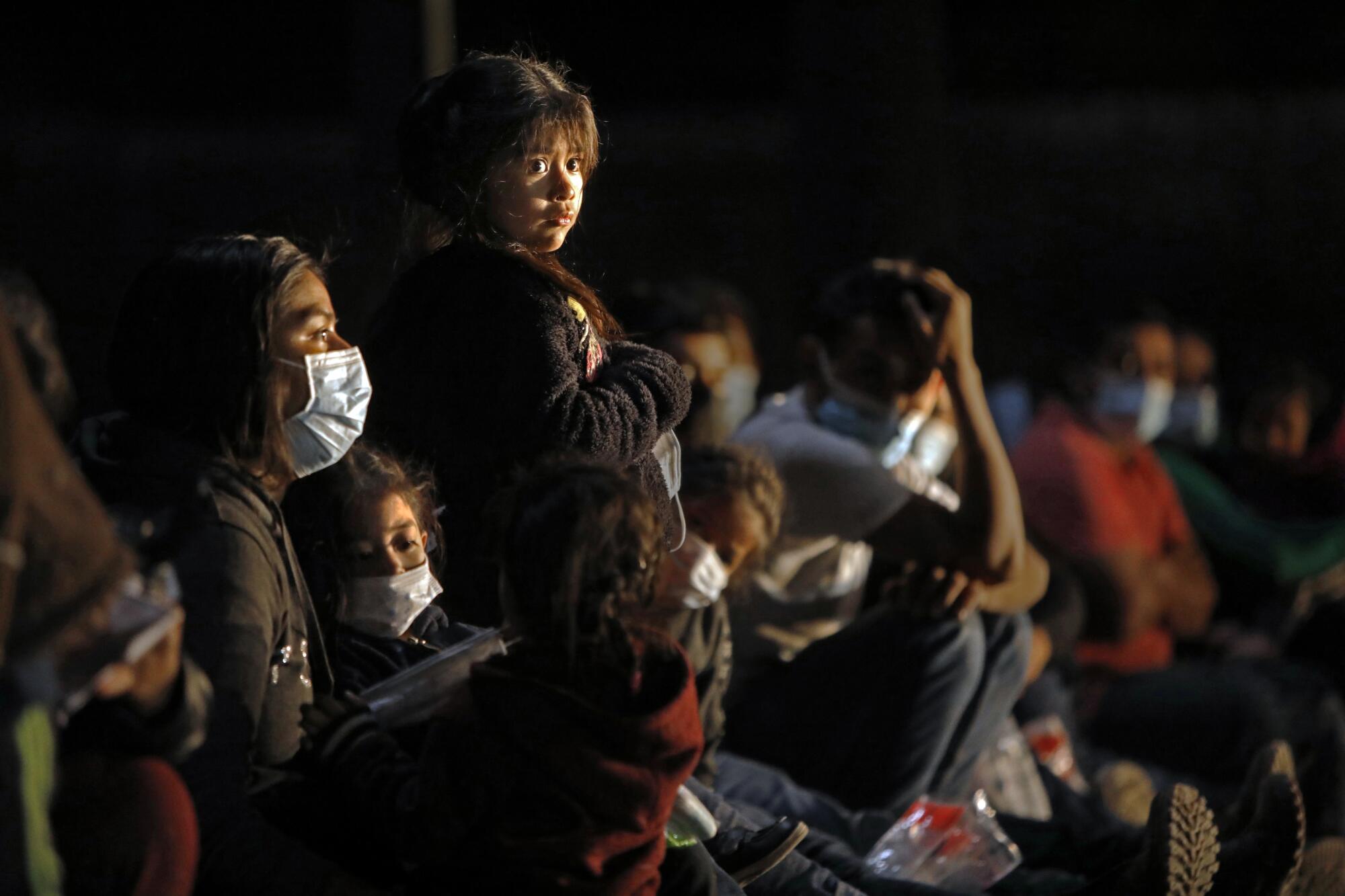
“We heard that there is a new shelter in the United States for people arriving with children,” said Cinthia Mariela Guzmán, a 19-year-old from Honduras who had stopped on the side of the highway to give her aching feet a rest.
She was traveling with her partner and their 3-year-old son, Emenim, who was named after the rapper.
She said hurricane flooding destroyed their home in the town of Puerto Cortes. “The water was up to the ceiling,” Guzmán said. They decamped to a shelter and later rented a single room.
Like many Hondurans arriving in Mexico, they were broke, having exhausted their savings on bribes to Guatemalan police and other officials while traversing that nation. Still, Guzmán and her partner were optimistic.
Gesturing to her small son, Guzmán said, “We hope he has a better future on the other side.”
Linthicum reported from Ciudad Juarez, Hennessy-Fiske from Mission and McDonnell from Palenque. Times staff writers Molly O’Toole in Washington and Kate Morrissey in Tijuana and special correspondents Liliana Nieto Del Río in Palenque and Cecilia Sánchez in Mexico City contributed to this report.
More to Read
Sign up for Essential California
The most important California stories and recommendations in your inbox every morning.
You may occasionally receive promotional content from the Los Angeles Times.
